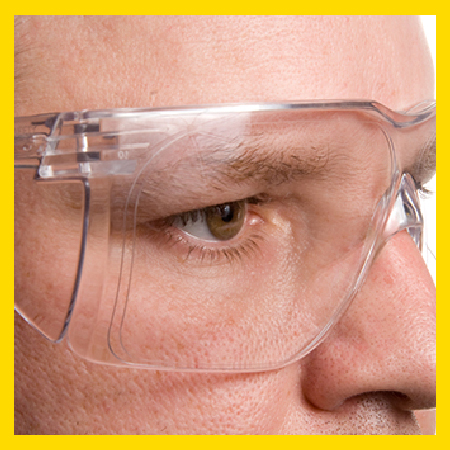Currency
October 01, 2018

Dry eyes are a common condition in the United States. Most often, people who have Dry Eye Syndrome are middle-aged or older. An estimated 4.88 million Americans over the age of 50 have dry eyes. Although Dry Eye Syndrome is more common to middle age and beyond, younger industrial workers often are subjected to conditions that cause the same symptoms.
Dry Eye Syndrome, Dry Eye Disease or Dry Eye, is a common condition that result in itchy, scratchy eyes and can affect your ability to see well and can evolve to more serious eye problems.
Symptoms include: stinging, burning, irritation, itchiness, grittiness, redness, watery eyes, sensitivity to light, blurred vision, eye fatigue, sore eyes, feeling of something in your eyes.
Causes include: allergies, antihistamines, inflammation, medications, contacts, poor lighting, bright lights, dry conditions, aging, hormonal changes, gender, weather, prolonged reading, stress, smoking, health conditions, physiological, air pollution, CVS-Computer Vision Syndrome, industrial conditions.
Healthy tears help lubricate, heal and protect the surface of the eye. Poor quality tears can contribute to inflammation and progressive disease.
Each tear component is produced by different glands on or near the eye:
The oily component is produced by meibomian glands in the eyelids.
The watery component is produced by lacrimal glands located behind the outer aspect of the upper eyelids.
The mucin component is produced by goblet cells in the conjunctiva that covers the white of the eye (sclera).1
A problem with any of these sources of tear film components can result in tear instability and dry eyes, and there are different categories of dry eyes, depending on which component is affected. For example, if the meibomian glands don't produce or secrete enough oil (meibum), the tear film may evaporate too quickly — a condition called “evaporative dry eye.” 2

Safety glasses have been worn for decades and were first introduced to reduce the incidents of a direct projectile reaching the eye. Now workers are not only concerned about direct impacts to the eyes but also eliminating eye injuries due to dusty atmosphere and particulates in the workplace.
Frames with brow guards or dust dams on the inside top of the frames help reduce particulate from reaching the eye from the top of the frame. Another type of protection and sometimes mandated by certain companies, is a full-surround protection. It’s made of rubber or foam and placed on a major portion of the inside of the front of the frame and gives maximum protection from particulates.
It should be noted that while additional protection is gained with using brow guards and full seal gaskets, this protection is not fool-proof and may add additional issues. With this additional protection, air circulation to the eye may be lessoned and fogging of the lenses may occur.
Specific safety eyewear can help moderate certain causes of Dry Eye Syndrome, however, it may be necessary to consult an eye doctor for the best result. The specific type of dry eye often will determine the type of treatment your eye doctor recommends giving you relief from your dry eye symptoms.
Dry Eye Syndrome, Dry Eye Disease or Dry Eye, is a common condition that result in itchy, scratchy eyes and can affect your ability to see well and can evolve to more serious eye problems.
Symptoms include: stinging, burning, irritation, itchiness, grittiness, redness, watery eyes, sensitivity to light, blurred vision, eye fatigue, sore eyes, feeling of something in your eyes.
Causes include: allergies, antihistamines, inflammation, medications, contacts, poor lighting, bright lights, dry conditions, aging, hormonal changes, gender, weather, prolonged reading, stress, smoking, health conditions, physiological, air pollution, CVS-Computer Vision Syndrome, industrial conditions.
Tears are a good thing
Healthy tears help lubricate, heal and protect the surface of the eye. Poor quality tears can contribute to inflammation and progressive disease.
Each tear component is produced by different glands on or near the eye:
A problem with any of these sources of tear film components can result in tear instability and dry eyes, and there are different categories of dry eyes, depending on which component is affected. For example, if the meibomian glands don't produce or secrete enough oil (meibum), the tear film may evaporate too quickly — a condition called “evaporative dry eye.” 2

Guard against dust & particles
Safety glasses have been worn for decades and were first introduced to reduce the incidents of a direct projectile reaching the eye. Now workers are not only concerned about direct impacts to the eyes but also eliminating eye injuries due to dusty atmosphere and particulates in the workplace.
Frames with brow guards or dust dams on the inside top of the frames help reduce particulate from reaching the eye from the top of the frame. Another type of protection and sometimes mandated by certain companies, is a full-surround protection. It’s made of rubber or foam and placed on a major portion of the inside of the front of the frame and gives maximum protection from particulates.
It should be noted that while additional protection is gained with using brow guards and full seal gaskets, this protection is not fool-proof and may add additional issues. With this additional protection, air circulation to the eye may be lessoned and fogging of the lenses may occur.
Specific safety eyewear can help moderate certain causes of Dry Eye Syndrome, however, it may be necessary to consult an eye doctor for the best result. The specific type of dry eye often will determine the type of treatment your eye doctor recommends giving you relief from your dry eye symptoms.









